Behind every good cup of coffee there is a story to be told. Years of hard work, thoughtful planning, coordination, perseverance, and execution. On the mountainside in San Ramon, not only can you hear a coffee story like this but taste it as well. In this post, we’ll share our experience at Adrian’s Coffee Tour and let you know how to visit.
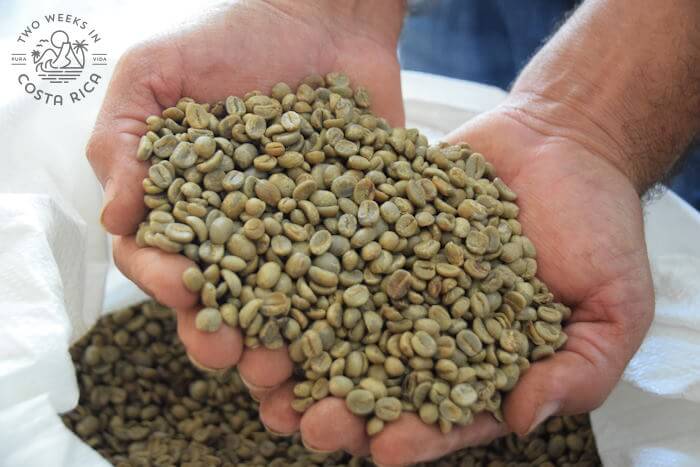
Location
Adrian’s Coffee Tour and Farm is located just 25 minutes west of San Ramon in a small town called Potrerillos de Piedades Sur. San Ramon is an authentic locals’ city with a history of coffee farming.
At about one hour from Costa Rica’s SJO International Airport, many visitors pass through this area on their way to La Fortuna to see the famous Arenal Volcano.
Arriving at Adrian’s Coffee Farm
After weaving along a country road outside San Ramon, we arrived in the small village of Potrerillos de Piedades Sur. Farm fields and forest mixed on the roadsides. Houses were spread out.
Following our phone’s directions, we slowed and turned up a dirt driveway. There, in an open barn, we saw Adrian. He was waiting alongside his son and daughter.
Dressed in blue jeans, a button-up shirt, and a wide brimmed hat, Adrian had a calm, comfortable demeanor as he greeted our family. It immediately relaxed us after we had rushed to get to the tour.
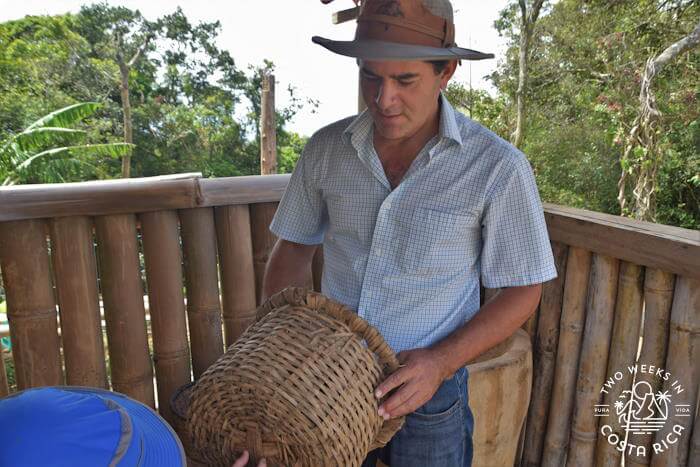
Adrian’s Coffee Tour
How It All Started
Adrian began by telling us about his coffee project. When we visited, his coffee tour was new, though he explained that he’d been growing coffee and other crops his whole life.
Typically, the family would sell most of the coffee harvest to local cooperatives. They did keep some beans, though, and Adrian can remember his grandparents drying and roasting them by hand.
As a kid and still today, Adrian told us that the best prices are given for the best quality coffee beans. As an adult, Adrian knew his beans were excellent quality, but even at the highest prices, the money from the cooperatives wasn’t much.
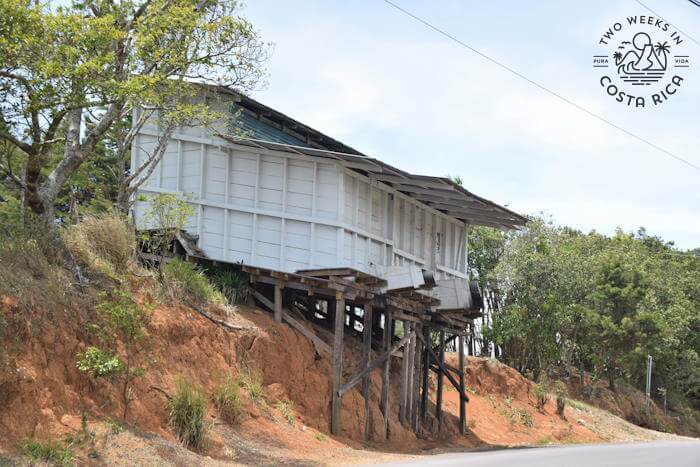
Adrian explained that his beans would get mixed with coffee from other farms and shipped out to be sold as different blends. It was those coffee companies that were making all the money, not the small farmers.
Selling coffee to the consumer is where Adrian could see an opportunity. The price for a bag of roasted beans or ground coffee was much more than that of raw coffee. And, if he grew, roasted, and sold his own coffee, he could really show off the quality of beans his farm produced.
Walking the Coffee Field
Down the nearby slope, rows of small coffee plants were growing in rich soil. As we walked along some steps, Adrian explained that this field was small, but he had much larger ones up the road.
It was here that we learned about all the work that goes into each plant, and in turn, each bean. Adrian explained that it takes two months for a coffee plant to sprout, then six-to-eight more months before it can be planted in the field.
The plants we saw were young and vulnerable. We learned that they needed constant care for about four years before producing any coffee fruits.
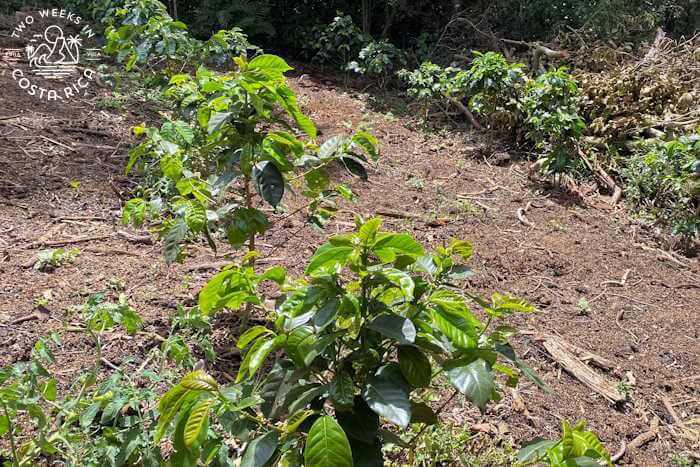
A Sustainable Approach
Adrian went on to explain about some of the setbacks his coffee plants can encounter like fungi and insects. While most farms use sprays and chemicals, he tries to avoid them.
He led us along a trail to the neighboring forest. It was darker and cool.
Moving some leaves from beneath a tree, Adrian pointed to the rich black dirt. It was mixed with decomposing leaves and sticks. He explained that this mix contained a whole ecosystem of microorganisms. It’s how the forest keeps itself healthy.
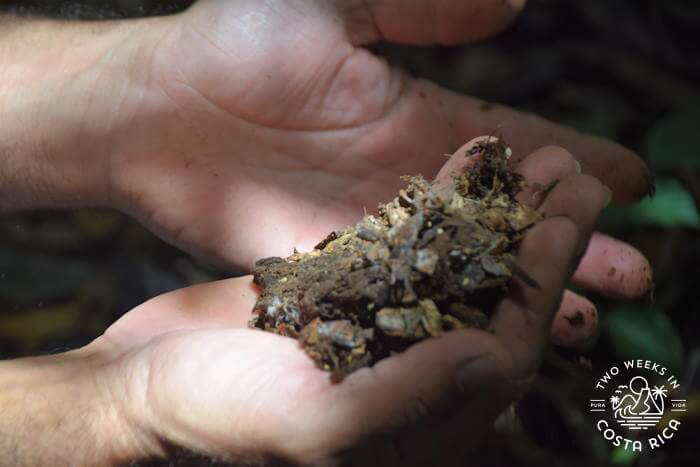
Adrian takes small amounts of the forest compost and uses it to make compost tea. This natural liquid is then sprayed all around the plants in his field. The compost tea can kill bad bacteria and fungus. It also feeds the plants.
Adrian also plants other trees and fruits in the coffee fields to increase biodiversity.
With happy, healthy plants comes good coffee.
Coffee Processing
Husking
After seeing the field, it was time to learn how the coffee was processed.
Adrian led us to a big green machine at the top of the hill. He poured a basket of red and green coffee fruits (called cherries) into the top of a loud machine. It quickly churned them into a container below.
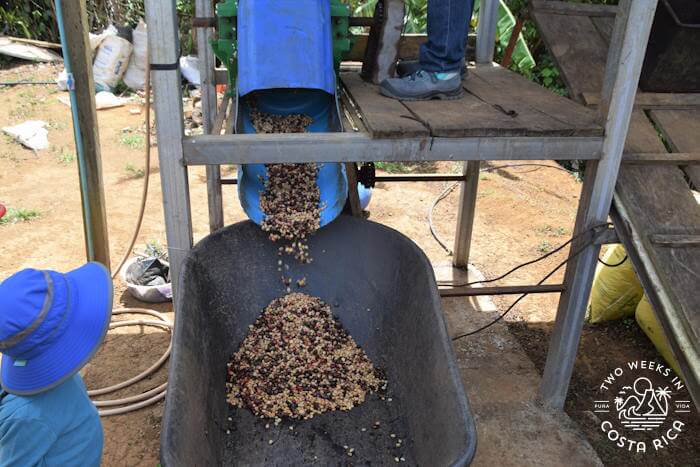
In the process, this machine removed the fruit part of the coffee, leaving just the beans. From there, they composted the fleshy fruit and dried the remaining coffee beans.
Drying – The Honey Process
Another important part of the coffee’s flavor, we learned, is how the coffee is dried.
Adrian uses what is known as the honey process. This means that the coffee beans are dried while they still have a sticky, sugary outer membrane intact. This membrane passes its sweetness onto the coffee bean, hence the honey name.
A lot of other coffee producers remove the sweet outer membrane with water before drying. But Adrian believes it gives the coffee a better flavor.
Next, we peeked into a nearby greenhouse where the beans were drying. As soon as we entered, we noticed how hot it was. Adrian said that on sunny days, temperatures inside can soar to 50 °C (122 °F).
The beans would dry here for eight to ten days, Adrian said. He needed to rake them often to promote even drying.
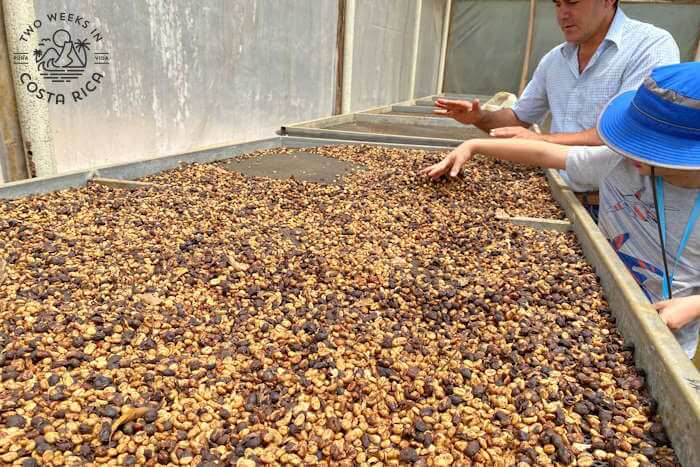
Husking – Part Two
Before roasting, there was one more step in the coffee process. That thin outer membrane on the coffee bean, now dried, needed to be removed.
Adrian brought us over to a wooden pilon, which is like a giant mortar and pestle. He demonstrated how in the old days they would use the heavy wooden pestle to crush off the outer shell of the coffee. Then he gave us each a chance.

Adrian remembered doing this as a kid with his grandmother for hours on end. He then led us to a machine in his barn, which saves them hours of the backbreaking work.
The result after this step was raw coffee, or what Adrian called café oro. It had a tan-golden color and a sweet aroma.
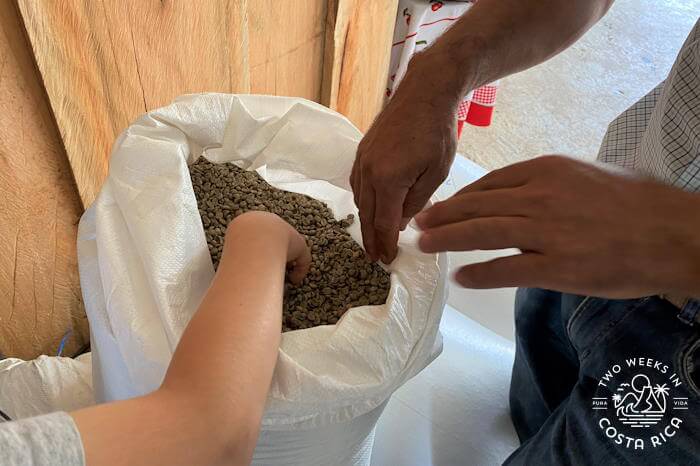
Roasting
While beautiful, the raw coffee still needed more work to be ready. Roasting was the next step.
For our tour, Adrian used a mini roasting machine to make us a small batch of both light and dark roast.

While it was rotating over a small flame, he explained that he sends about 25% of his coffee to his sister nearby. She has a professional grade (expensive) roaster that is more consistent than home methods.
At the roaster, Adrian’s coffee is heated to about 93 °C (200 °F) using a special computer program. This program heats the coffee beans evenly at different temperatures along a curve until they are roasted to perfection.
Currently, Adrian sells the other portion of his crop as raw coffee to be roasted commercially. He hopes to roast more of his own as his business grows.
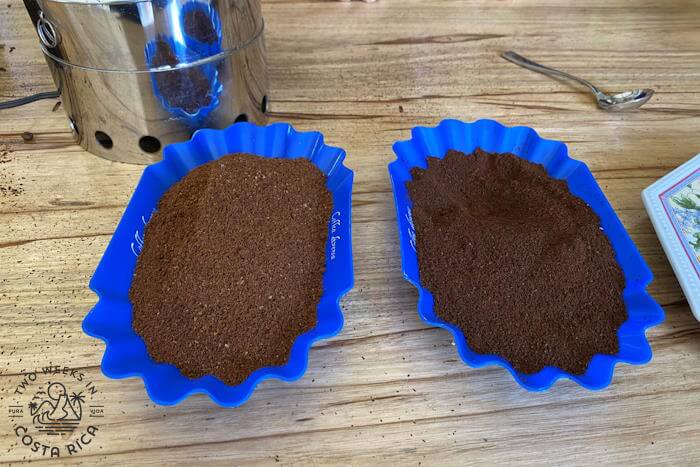
Tasting
After a relaxing and informative tour, it was finally time for a taste. Adrian and his kids all participated in helping prepare our cups. We tried a light roast, then a dark.

As we drank, we talked to Adrian about his small town, the coffee industry, and Costa Rica in general. Our two boys laughed and played with his young son outside.
The flavors of Adrian’s coffee were memorable. In each sip, we could taste what we had just experienced. Earthy rich flavors, sweet honey, and all that hard work that goes into every good cup of coffee.
Planning Your Visit
Hours
Adrian’s Coffee offers tours daily between 8:00 a.m. to 4:00 p.m. with prior reservations only.
Price
$15 per person
How to Book
Adrian’s Coffee Tour has a website with more information and contact. We recommend using WhatsApp: (506) 8862-4063. If you are outside Costa Rica, be sure to add +1 before the number.
Tours are offered in English or Spanish.
Purchasing Coffee
When visiting, make sure to bring some extra cash to buy bags of coffee beans or ground coffee. After tasting it, you will definitely want to bring some home. We wish we had bought more!
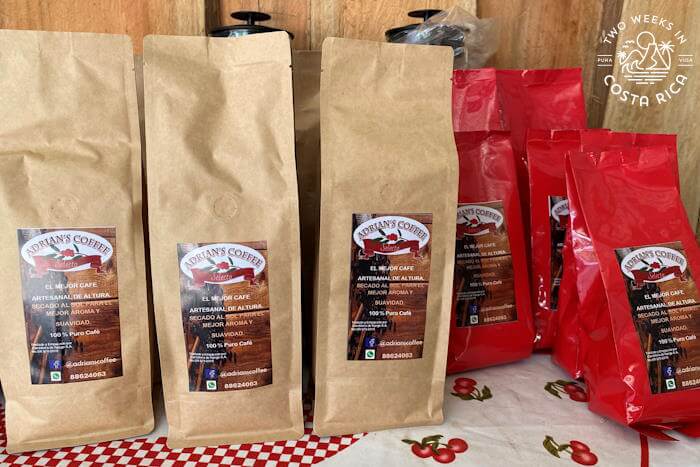
Have a question about visiting Adrian’s Coffee or want to share your experience? Leave a comment below.
Looking for more information to help you plan your trip? Check out these posts:
Renting a Car in Costa Rica: Clearing Up the Confusion – Not all car quotes are accurate. Find out about Costa Rica’s mandatory insurance, extra fees, and other charges that some companies do not include in their price.
La Fortuna: What to Expect from Costa Rica’s Most Popular Destination – Most travelers have La Fortuna on their list and for good reason. Find out about activities, hotels, restaurants, and more with this post.
Using ATMs and Credit Cards in Costa Rica – Many people ask if they can use their card for purchases or if they need to take out local currency. We cover it all here.
